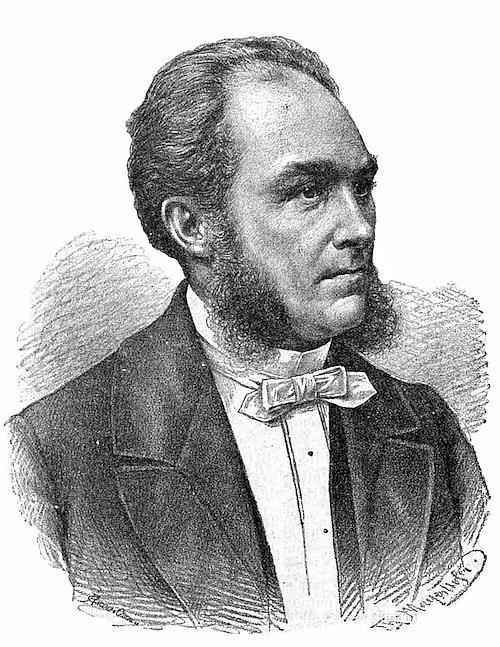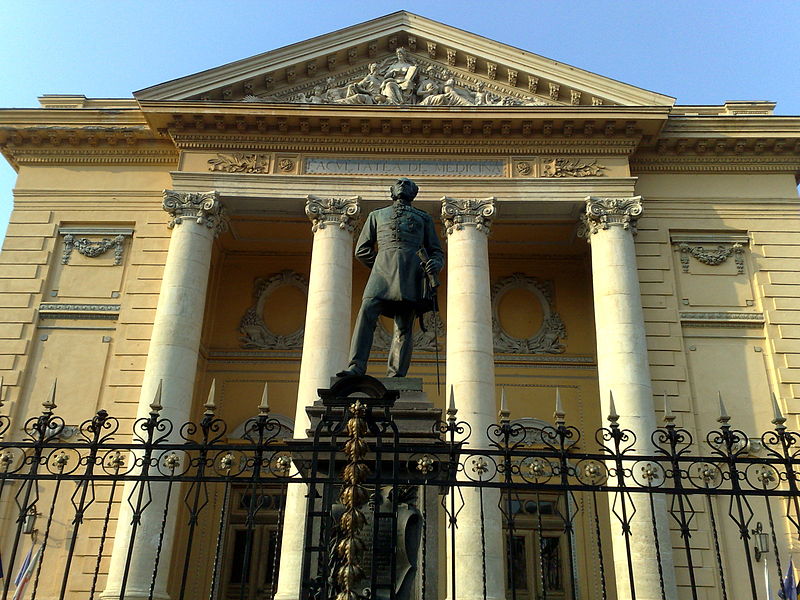Bucharest Centennial: Carol Davila, the doctor who transformed the Romanian medical education



The yard of the Military Hospital in Bucharest hosted for a long time the city’s only sculpture by Constantin Brâncuși exhibited outdoor. It was a bust of the general - physician Carol Davila, unveiled in September 1912. Davila, who was born in Parma, Italy, educated in France, and settled in Romania, is often recognized for the essential contribution he brought to the organization and development of the Romanian medical instruction and the military and civilian healthcare system.
With the experience of someone who will get to know closely the country he moved to, Davila became an expert who enjoyed the trust of the three sovereigns under whose rule he undertook his mandate. From the reform projects he presented to Barbu Știrbei to initiatives such as the orphanage patronized by Elena Cuza, Davila identified and built solutions to urgent local problems. The doctor also worked in Moldova and in Bessarabia, where together with doctor Iacob Felix he helped set up several hospitals.
As such, in 1866, when he joined Ion Brătianu to convince Carol of Hohenzollern-Sigmaringen to accept the crown of Romania, Davila had the perspective of someone who understood the shared linguistic and cultural identity of the inhabitants of the Romanian provinces and their union project. Using a map, the doctor reminded the future King Carol I that the neighboring provinces of that time’s Romania were inhabited mostly by Romanians and they should join the country, according to accounts included in the monarch’s memoires.
Half a century later, the project presented by the doctor and initially labeled by the sovereign as “such a distant” plan, will become reality at the time of the Great Union of 1918. This year Romania is celebrating the centennial of the Great Union. Even if Davila passed away before the union happened, many of the projects he created remain landmarks in Romania’s modernization process, which will continue after 1918.
The history of the Military Hospital in Bucharest is tightly connected to the activity of Carol Davila. It is one of the many institutions and organizations associated with the activity of the famous physician.
Davila came to the country in 1853, following a request of prince Barbu Știrbei, who wanted to reorganize the sanitary service of the army. He took over the job of general inspector of the army’s sanitary service and was also appointed head physician. He undertook his work at the Military Hospital, which was located at the time on the premises of the former Mihai Vodă monastery.
The Military Hospital in Bucharest was set up in 1831 by German physician Georg Johann Andreas von Grünau. It was the first of its kind in the country, and Grünau the first to lead the institution, between 1831 and 1837. Davila was the fifth head of the hospital, and had the longest mandate, of 29 years, from 1853 to 1882. Ever since his arrival in Romania he spent a lot of time in the hospital and in its branches because of an ongoing epidemics. Among the first projects Davila undertook was a report evaluating the facilities and processes and recommending reforms.
In 1858 Davila introduced an internal statute of the hospital and separated the services in two distinct departments: medical and surgical. At the same time, he set up a “Minor Surgery School,” based on the model of the school in Angers, France, with a curriculum that included French, classical languages and history. He established a practice facility for military medical instruction and developed a training center. The future doctors started going to further training in France, in Montpellier and Paris.
It was also Davila who established the first group of pharmacy students. He made the register for copying prescriptions compulsory and, at his request, the first national pharmacopoeia was generated. This was a manual of the main pharmaceutical substances and formulas used in preparing the medicines. The military pharmacy of the hospital, a place where medicine and pharmacy student trained, was expanded and modernized.
 Carol Davila statue in front of Medical University in Bucharest
Carol Davila statue in front of Medical University in BucharestIn 1857 the National School of Medicine and Pharmacy was established, following the work of Davila together with physician Nicolae Kretzulescu. This marked the beginning of the medical instruction in the country. A veterinary medicine section was later added. In 1869, in the third year of the rule of Carol I of Romania, the Medicine and Pharmacy School became the Faculty of Medicine, Surgery, and Pharmacy. As such, the diplomas issued by the Romanian institution were recognized at a European level.
At the same time, Davila took charge of a project concerning the sanitary service’s care of orphaned children. He established in 1861 an orphanage for 40 girls in the capital’s Cotroceni neighborhood. The orphanage later moved to a different building, established under the patronage of Elena Cuza, the wife of ruler Al. Ioan Cuza. An orphanage for boys followed, as well as a school for hearing and speech-impaired children, run by a French doctor. The first dispensaries in the country emerged at his initiative as well.
The doctor’s activity led him to get involved in the establishment of several scientific societies, such as the Medical Society (1857), the Red Cross Society (1876) and the Nature Sciences Society (1876) as well as the medical magazines The Medical Monitor (1862) and The Medical Gazette (1865).
Prince Al. Ioan Cuza bestowed the rank of general-physician on Davila, and later, during the 1877 independence war, he led the medical service of the army. He started equipping the army with medicines and medical supplies early, and the good management of the sanitary service proved essential during the war, when the field hospitals, military ambulances and sanitary trains helped save many lives. Davila received numerous decorations and distinctions for his service on the front during this war, following which the country obtained its independence from the Ottoman Empire. With this, it got closer to the project of the Great Romania, accomplished in 1918 after the doctor’s death.
A copy of the bust of Davila can still be admired today in the yard of the Dr. Carol Davila Military Hospital (Spitalul Universitar de Urgenţă Militar Central „Dr. Carol Davila”), while the original sculpture is hosted, beginning with 1990, at the Ferdinand I National Military Museum. The sculpture is included on this list of Bucharest’s historical monuments, which also includes the Tomb of doctor Carol Davila and of Ana Davila, his wife, located in the Cotroceni neighborhood (at the intersection of the Ana Davila and Nicolae Păulescu streets). A statue of the general-physician, the work of Carol Storck, stands in front of the entrance of the palace of the University of Medicine of Bucharest. The university carries the name of Davila, the man who developed and transformed to such an extent the local medical instruction and practice.
(opening photo: Carol Davila portrait published in the Albina Magazine public domain on digibuc.ro; inside photo: Carol Davila statue in front of Medical University in Bucharest - Wikipedia Commons/Korinna)